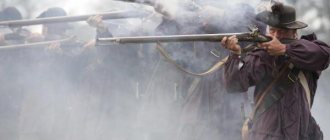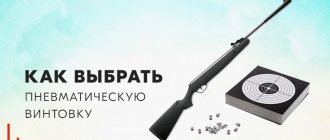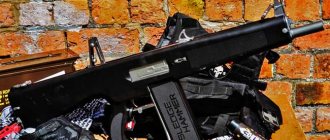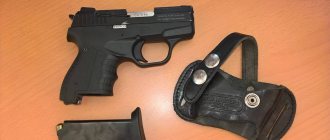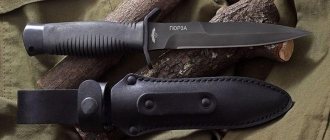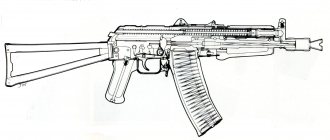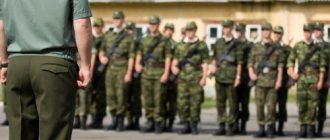Wads for shot cartridges for hunting smoothbore weapons are made of the following types: main wads and additional wads. Let us recall that the purpose of the main wad is to prevent the breakthrough of powder gases into the shot shell, that is, to provide obturation. The purpose of the additional wad is to fill the internal volume of the cartridge case between the main wad and the shot projectile in such a way that there remains a sufficient distance from the cut of the barrel barrel to the projectile to secure the latter. We suggest talking in more detail about the features of wads and gaskets for shot cartridges.
Wad functions
Wads perform the following functions:
in the cartridge, the column of wads, in addition to what is indicated, plays the role of a shock absorber, softening the perceived impact of the powder gases on the shot shell at the very beginning of its movement, as well as huge inertial loads when the shot shell moves along the barrel bore, thereby reducing the deformation of individual pellets and evenly transmitting the pressure of the powder gases on the shot column, thereby ensuring that its original shape is preserved when moving along the barrel;- provides sufficient resistance to the effects of powder gases from the start of the projectile’s movement until it leaves the muzzle of the barrel;
- during the next shot, it removes carbon deposits from the walls of the barrel bore from the previous one.
How many wads do you need?
There should be one main wad in the cartridge. Its optimal height for the normal process of shot development, which ensures the greatest combustion of the powder charge, is from 0.5 to 0.75 barrel caliber. The height of the main wads, which are sold to hunting stores, can be 8, 10, 12 or 14 mm with a deviation from the nominal size within + and – 1 mm. There can be one or more additional wads in a cartridge, depending on the selected mass of the powder charge and the shot shell. When equipping a cartridge in a wad column, it is recommended to have several thin additional wads rather than one tall one. Additional wads on sale can be 3, 4, 5, 6 or 7 mm in height with a maximum deviation of + and – 0.5 mm.
About the mechanical device for ammunition
Beginning hunters also ask the question: “What is a seal?” This interest is due to the fact that homemade hunting cartridges are often equipped with this device. In weapons, thanks to seals, powder gases do not pass through the gap between the barrel channel and the bullet belt. Judging by numerous reviews from owners, such ammunition never fails. Shutter wads come in powder and shot types. Let's look at each of them.
Main characteristics of wads
Regulatory and technical documentation provides for the production by the domestic industry of felt and wood-fiber wads with the diameters indicated in the table.
The diameters of the main and additional wads for a certain caliber and cartridge case are the same. Wads should have a cylindrical shape, their bases should be parallel. You should not use wads that are conical, convex, concave, not cylindrical, skewed or with non-parallel bases, if the indicated shape deviations go beyond the deviations from the nominal size, since the use of such wads worsens the combat of the gun.
The material of the wads should not contain various solid particles that scratch the surface of the bore: metal, glass, sand, etc. The density of the felt used for the manufacture of wads (or wads in an ungreased form) should be in the range of 250-460 kg/m. The side surface of the main felt wads is greased to a depth of no more than 3 mm. Salting from all sides is not allowed, since in this case the wad loses its elasticity, when fired, it increases the pressure of the powder gases, which increases recoil and which can even lead to swelling of the barrel, especially with a large muzzle constriction. The lateral surface of additional wads can be ungreased or greased. When the additional wad is greased, there must be a thin cardboard spacer in the cartridge between the wad and the shot shell; when it is not greased, its presence is not necessary. The cooled composition for greasing wads should not be liquid, so as not to saturate the tube of the paper cartridge case, the cardboard gasket for the gunpowder and the gunpowder in the cartridge. Wads must ensure fire safety - not burn out from powder gases and not smolder after a shot. The weight of one greased wad should not exceed: the main one - 2.5 g; additional – 1.5 g.
Information for loading cartridges
Powder and shot wads are used to load shotgun cartridges*. * Loading cartridges with and without shot wads is discussed in more detail in the “Shotgun Combat” section. The purpose of the powder wad and cardboard spacer is to separate the powder from the shot and prevent powder gases from penetrating into the shot shell between the walls of the barrel and the wads. The powder wad, locking the combustion chamber of the powder charge, is like a piston-obturator for the powder gases and allows the best possible use of their energy for throwing a projectile. The powder wad, with its elasticity, softens the initial push of the powder gases and thereby weakens the harmful crushing of the pellets. The cardboard gasket prevents the penetration of powder gases through the thickness of the felt wad, which is not greased in the middle, and prevents the penetration of sediment into the powder charge. The powder wad and the cardboard spacer for the powder resist the first movement of the projectile and in the initial phase of the shot's development accelerate the ignition and combustion of the powder charge, especially with smokeless powder. Shot wads serve to hold the shot in the cartridge and, although to a much lesser extent than powder wads, influence the quality of the shot and the fall of the shot shell. POWDER WADSThe powder wad must separate the gunpowder from the shot well and prevent powder gases from penetrating into the shot between the walls of the barrel and the wad. In addition, the wad should carry with it the greatest possible amount of residues accumulated in the barrel from previous shots, and expend as little gas work as possible on its movement along the bore.
The wad shapes are shown in Fig. 217, a and b.
Rice.
217. Powder felt wads: a - normal-shaped powder felt wads; b - defective shape of felt wads resulting from improper cutting. The wad must be elastic and tightly adjacent to the walls of the cartridge case, and at the moment of firing - to the walls of the barrel.
The wad can withstand high pressure and high temperature of gases, so it must be non-flammable.
Wads should not shrink or warp during long-term storage in loaded cartridges and packaging.
In order not to rotate around their diameter under the influence of the force of powder gases, they must be quite HIGH.
The wads should not contain hard particles that scratch the barrel.
Wool is considered the best material for wads, as it is easier to process and soak than others *.
- * Only the side of the wad that slides along the walls of the barrel is impregnated.
Powder wads are usually made from felt or a mass consisting of wool and paper. In addition to wool and paper, leather, cork, rubber, and an alloy of wax and lard were offered for wads.
The quality of the wads significantly affects the quality of the gun’s combat and its safety. If you use hard wads or too plastic ones, for example, made of rubber, an alloy of wax and lard, or felt wads soaked through with sediment, then, as a rule, they lead to swelling of the barrels and give greater recoil when fired.
The fact is that plastic wads made of rubber, while moving along the barrel, decreasing in height and increasing in diameter, are pressed with great force against the walls of the barrel bore and cause pressure from the powder gases, which is not always safe for the strength of the gun. The same effect during the shooting process is exerted by wads made from an alloy of wax and lard, as well as felt wads that are thoroughly salted.
WAD SIZES
Felt powder wads and powder spacers should be slightly larger than the inner diameter of the cartridge case (by 0.3-0.8 mm, depending on the type of gunpowder). This is done in order to prevent the breakthrough of powder gases between the wad and the walls of the barrel bore.
For paper cartridges, caliber felt wads and gaskets for gunpowder are used, and for metal cartridges - two calibers larger than the caliber of the gun (for 12-gauge metal cartridges - 10-gauge wads and gaskets, for 16-gauge cartridges - 14-gauge wads th caliber, etc.).
The diameters of felt powder wads and cardboard gaskets for gunpowder are indicated in the table. 27.
The combat quality of a shotgun is affected not only by the diameters of the powder wads, but also by their height (thickness). The height of the first felt wad should be at least half or two-thirds of the caliber. It is this height that makes the wad stable and does not allow it to turn, and this is very important for the consistency of the gun.
Excessive height of the powder wad (more than 2/3 of the caliber) worsens the quality of the battle.
But even when filling paper cartridges with smokeless powder, you should not use a very high wad. It is better to put two or three wads; Moreover, the one that will touch the gunpowder should not be less than 7 mm in height. Under the twist of the free end of the sleeve, you need to leave an edge of 5-6 mm.
A wad with uneven thickness may cause the bottom of the shot shell to misdirect when it touches it.
We present the dimensions of cardboard spacers for gunpowder and felt wads according to S.A. Buturlin (diameters in mm) (Table 27).
TABLE 27. DIMENSIONS OF CARDBOARD SPACERS FOR POWDER AND FELT WADS ACCORDING TO S. A. BUTURLIN (diameters in mm)
| Caliber | Paper sleeve | Metal sleeve | ||||
| Cardboard gasket for gunpowder | Felt wad for gunpowder | Cardboard gasket for gunpowder | Felt wad for gunpowder | |||
| normal | strengthened | normal | strengthened | |||
| 10 | 20,00 | 20,10 | 20,45 | 20,75 | 20,90 | 21,20 |
| 12 | 18,90 | 18,90 | 19,15 | 19,70 | 19,70 | 19,19 |
| 16 | 17,10 | 17,25 | 17,50 | 17,80 | 18,05 | 18,25 |
| 20 | 15,90 | 16,05 | 16,25 | 16,60 | 16,85 | 17,00 |
| 24 | 14,95 | 15,15 | 15,30 | 15,70 | 15,95 | 16,05 |
| 28 | — | — | — | 14,80 | 15,05 | 15,15 |
| 32c | — | — | — | 12,65 | 12,90 | 13,00 |
| NOTE: The table shows the appropriate dimensions of the tool (cutting) - hole diameters; The tolerance is taken upward to 0.05 mm. | ||||||
In table 28 shows the most appropriate dimensions for the height of powder felt wads for different calibers.
| TABLE 28. DIMENSIONS OF THE HEIGHT OF POWDER FELT WADS | ||||||||
| Caliber | Height in mm | Case (material and caliber) | ||||||
| 14,0 | 12,5 | 11,0 | 9,5 | 8,0 | 6,5 | 5,0 | ||
| 10 | O | O | O | O | O | O | — | Metal., 12 |
| 12 | — | O | O | O | O | O | O | Paper, 12 |
| 14 | — | O | O | O | O | O | — | Metal., 16 |
| 16 | — | — | O | O | O | O | O | Paper, 16 |
| 20 | — | — | — | O | O | O | O | Metal. and paper, 20 |
| 24 | — | — | — | O | O | O | O | Metal., 24 |
| 28 | — | — | — | — | O | O | O | Metal., 28 |
| 32c | — | — | — | — | O | O | O | Metal., 32c |
| NOTES: 1. Height tolerance ±0.5 mm. 2. Wads 5 mm high are used as additional ones. 3. Wads with a height of 6.5 mm can be greased or not, and wads with a height of 5 mm can only be greased. | ||||||||
Gaskets for gunpowder are made from loose cardboard 1.5-2 mm thick by cutting them with an appropriate die cutter.
When cutting out gaskets, the following requirements must be observed in order to obtain good quality cardboard gaskets:
- cutting should be done with one blow with a wooden hammer on the die-cut;
- You only need to cut the gaskets into one layer of cardboard;
- place the tool (cutting) strictly vertically to the supporting working plane - the end of the wooden block;
- Do not use cardboard that is wrinkled or contaminated with sand and dust.
Additional wads are necessary so that the free edge of the sleeve remains under the twist of no more than 5-6 mm. The material for them is felt, cloth and felt. Additional wads should not be greasy to avoid the lower pellets of the projectile sticking to them.
Wads for gunpowder from felt, felt or pieces of felt can be made by the hunter himself using die cutting (Fig. 218).
Rice.
218. Die cutting for wads Felt or felt must first be cleaned of sand and dirt, thoroughly washed and dried. After drying, one or both sides are covered with flour paste paper and then dried again.
After final drying, the wads are cut out. To do this, place felt on the cleanly cut end of a wooden block made of dense wood (maple, beech, oak) and hit the die-cut with a wooden hammer.
Cutting out the wad should be done with one blow with the tool in a vertical position to the supporting plane.
The most necessary condition for cutting straight wads is a sharp cutting edge of the die cutting. WAD WASHING
The purpose of wad trimming is to prevent the breakthrough of powder gases between the wad and the walls of the barrel bore. The sludge should not liquefy at temperatures up to +40°C, not saturate the paper tube of the cartridge case and the powder gasket, and prevent the powder from sticking to the wad.
The greasy wad should be quite rigid and, when moving, lightly lubricate the walls of the bore. At ordinary room temperature, the greasy side of the wad should be dry, and when pressed with your fingers, no greasy substance should appear on the greasy surface.
For waxing felt wads, beeswax, lamb or beef lard, paraffin, stearin, technical petroleum jelly, and cannon lard are used.
For summer hunting, the best wax is a mixture of 4 parts (by weight) wax, and 1 part lard, or 80% paraffin (stearin), and 20% technical petroleum jelly. For winter hunting: 1/3 wax, and 2/3 animal fat or 65% paraffin, and 35% technical petroleum jelly.
To prepare the osalka, all these substances are melted, stirring thoroughly, and brought almost to a boil. Place the cloth on a frying pan or small baking sheet and, pouring the sludge composition with a spoon, saturate it. Then, having pinned the wad on a needle fixed in a wooden stick, or on a thin awl, they roll it over the soaked cloth.
As the composition is used up, it is added again.
The baking tray with the cloth is heated all the time. The sludge composition is also periodically heated and mixed thoroughly (Fig. 219). Rice. 219. Wadding of wads at home: 1 - baking tray; 2 - cloth soaked in sediment; 3 — wad; 4 - awl (a needle mounted on a wooden holder) WADS FROM FELT SUBSTITUTES
Among felt-substituting materials for wads, sphagnum peat deserves attention. The advantage of peat wads is that when they fly out of the trunk, as a rule, they scatter into small pieces. This works very well on a shot shell, since its center is not broken by a wad pushed by the force of the muzzle pressure of the powder gases.
Despite the fact that sphagnum is a very cheap material, the production of wads from it is not economical, since the technological process for their manufacture is still expensive.
Wads made from sawdust and other loose solids, placed between two spacers, reduce the speed of the shot and produce uneven spray from shot to shot.
Loose wads used for fast-burning smokeless powder worsen the firing of the gun and reduce the strength of the barrel. For a satisfactory shot, strong compression of the bulk material between two cardboard spacers is necessary, and this greatly compresses the powder projectile, increases the loading density and leads to an excessive increase in the pressure of the powder gases when fired. In addition, the use of loose wads in clay pigeon shooting is prohibited.
In the hunting literature, new powder wads made from a mixture of cork meal and polymerized (condensed) vegetable oil have been repeatedly mentioned.
The authors recommend these wads, proving their low cost and excellent ballistic properties. Such an oil-cork wad is shown in Fig. 220. It is made with one, or less often with two, grooves on the leading part, and on the upper and lower bases there are recesses to make the wad lighter and better sealing. Rice.
220. A wad made from a mixture of cork meal and polymerized (condensed) oil. Testing of American 16-gauge Western shotgun cartridges, carried out in 1947, showed that such wads have more disadvantages than advantages. The cartridges were equipped with Cordite type gunpowder with a weight of 1.8 g and a solid shot projectile of 30 g. The wads were made of cork flour and condensed vegetable oil.
During the control shooting of these cartridges, the initial speed Yo = 380 m/sec was obtained, the speed at 10 m from the muzzle was 308 m/sec, and the average pressure of the series of cartridges was 890 kg/cm2. The highest pressure of a single shot from this series was 1050 kg/cm2, while 16-gauge shotgun barrels are usually tested at 1000 atm. The recoil when firing these cartridges was difficult to tolerate for most shooters.
The experiments carried out showed the unsuitability of wads made from cork flour and polymerized vegetable oil. They have great ductility and are almost similar to wads made from an alloy of wax and tallow. The latter, as repeated experiments have shown, cause increased pressure and damage the trunks.
| Rice. 223. A shot cartridge filled with a paper cartridge with a wad shown in Fig. 222. 1 - sleeve; 2 — charge of black powder; 3 — wad seal; 4 — gasket for shot (wad) and gasket for gunpowder; 5 - shot shell; 6 - shot wad Recently, wads have appeared abroad, consisting of a cardboard body filled inside with cork chips; at the base of this body there is a bottom and a lid, which are held in place with a screw (Fig. 221). |
| Rice. 221. Cardboard wad with a ribbed leading surface, filled with cork chips: 1 - body; 2 - bottom; 3 - filler; 4 - circular grooves for easier friction and better sealing |
The side surface of such a wad has up to five leading belts for greater elasticity and better sealing. If powder gases break into the space between the first and second driving belts, they will go into the free space formed by the surface of the barrel bore and the wad belts. This work of gases will take some time, and during this period the shot shell and wad will leave the gun barrel. Even if the powder gases break into the second and third spaces, even in this case an almost good obturation will be maintained.
In 1947, experiments were carried out with other cardboard wads. But, unfortunately, after the death of the author who proposed this original design, further experiments were stopped. This wad is (Fig. 222) a cardboard cup of smaller diameter inserted into a cup of larger diameter. The lateral surface of the larger calyx is covered with a thin layer of special sediment. How to load cartridges with this wad is shown in Fig. 223.
| Rice. 222. Cardboard wad, consisting of two cups: 1 - outer cup, greased; 2 — inner calyx, ungreased |
The first experimental batches of these cardboard wads gave good results when loading cartridges with black powder. Experiments with loading cartridges with smokeless powder showed a decrease in projectile velocities and a decrease in the pressure of powder gases. It must be assumed that with further work on these wads, quite satisfactory results can be achieved.
Wads made of birch bark and leather are excessively hard;
they are suitable for firing black powder. SHOTGUN WADS
A shot wad holds the shot in a cartridge or barrel (in a ramrod gun) until it is fired. In addition, it should provide additional resistance to powder gases at the moment the wad passes the curled edge of the paper sleeve, which improves the combustion of the smokeless powder charge.
The thinner and lighter this wad is and the less friction it causes while moving along the bore, the better the fight will be.
But an excessively thin shot wad, even in paper cartridges, should not be used: when the edge of the paper cartridge is twisted, it will have an uneven surface and bulge. And the bulging of the shot shell together with the wad negatively affects the quality of the shot.
A very thin and weak shot wad can break through when transporting cartridges to a hunting area, etc.
Currently, in paper sleeves they use a thin (1.0-1.5 mm thick) wad made of loose cardboard. The diameter of the shot wad should be 0.1-0.2 mm larger than the internal diameter of the cartridge case at the barrel so that the wad fits into it with little friction. A free edge of the muzzle of 4-6 mm is left on top of the wad for twisting.
In metal shells, shot wads are used either from cork 4-5 mm thick, or from felt (ungreased), 2-4 calibers larger than the caliber of the shells. These wads, 6-8 mm thick, are covered on both sides with white paper so that you can write the shot number or make any other notes.
Cork shot wads dry out over time, so cartridges loaded with them are not suitable for long-term storage. Wads made from compressed cork chips are less susceptible to drying out.
Cardboard shot wads for metal shells should be 0.5 mm larger than the inner diameter of the shell at the barrel and 2.5-4 mm thick. For strength, such a wad is filled with melted wax or paraffin along the edges (Fig. 224). Cartridges with such wads should be carried in the bandoleer with the shot facing up, since the shot wads can come off due to shaking.
| Rice. 224. Securing a cardboard shot wad in a metal sleeve by filling it with wax When equipping shot cartridges with a scattering strike for firing at short distances from choke drill barrels, cardboard spacers 1-1.5 mm thick made of non-rigid cardboard are used, with a diameter equal to the inner diameter of the cartridge case or even 0.2-0.4 mm less. For example, for a 12 gauge paper sleeve with a diameter of 18.6-18.2 mm, and for a 16 gauge - 17.00-16.80 mm. In this case, it is best to use cardboard, used for making cigarette boxes, or thin binding. Instead of cardboard wads for shot, some hunters use thin celluloid wads, but such wads somewhat degrade the quality of the shot. They can only be used when equipped with paper cartridges. |
When loading cartridges with large buckshot (two, three, four buckshots in one row), the cartridge case is twisted without a wad. Small buckshot (seven pieces in a row) is held with a cardboard wad, like ordinary shot.
When shooting, especially with metal cartridges, after firing from the right barrel, you should transfer the cartridge from the left into it, and put a new cartridge into the left. This will prevent the wad from moving away and the shot from spilling into the left barrel. A shot wad that rolls out of a cartridge can cause the barrel to swell or rupture during the next shot.
The shot wad is usually marked with the shot number.
To number cartridges, it is good to use rubber numbers or make inscriptions. The numbers 6 and 9 should be underlined to avoid mistakes.
The wad is not used on top of the bullet.
If you put even a very thin wad on a bullet, then when fired, it can crush it under itself, causing the barrel to swell or rupture. The bullet is filled with wax or stearin for better fastening in the case. Original: https://www.sportguns.ru/
Why do you need a cardboard spacer?
The purpose of the cardboard gasket for gunpowder is to prevent the main wad from greasing the powder charge and from sticking the top layer of gunpowder to the greasy surface of the main wad. The powder gasket eliminates the possibility of powder gases penetrating when fired through the wad material into the shot shell. The purpose of the shot gasket is to hold the shot shell in the cartridge. The powder gasket is made of thicker cardboard than the shot gasket. The diameter and thickness of cardboard spacers for gunpowder and shot are given in Table 2. In hunting literature, it is recommended to use cardboard spacers up to 3 mm thick. When making cardboard gaskets for gunpowder yourself, you can cut them from cardboard of greater thickness than indicated in Table 2, or even use two gaskets when loading a cartridge, if their thickness corresponds to the data in Table 2.
Storing wads and gaskets
Wads and gaskets should be stored in packaged form, in a dry, ventilated area, protected from dust. Felt wads, in addition, must be protected from moths, which can severely damage even greasy wads.
Previous articleBlaser hunting carbine
Next articleHunting rifle MP 27
hunter
Acquaintance
Obturator - what is it? This term refers to a special mechanical device whose task is to block the flow. It can be light or some other radiation in an optical device. In this case, shutters are equipped with filming and film projection equipment. In optics, this mechanical device is mainly called a photographic shutter. In medicine, seals are presented in the form of prostheses and special devices, with the help of which they close or plug unnatural openings in the wall of the oral cavity. In diving, a seal is a sealing cuff that comes with a wetsuit. It is designed to reduce water flow into the sleeves. Shutters are also found in the rocket industry. This mechanical device is equipped with launch complexes. The task of the shutters is to ensure that missiles are pushed out of the silos.
